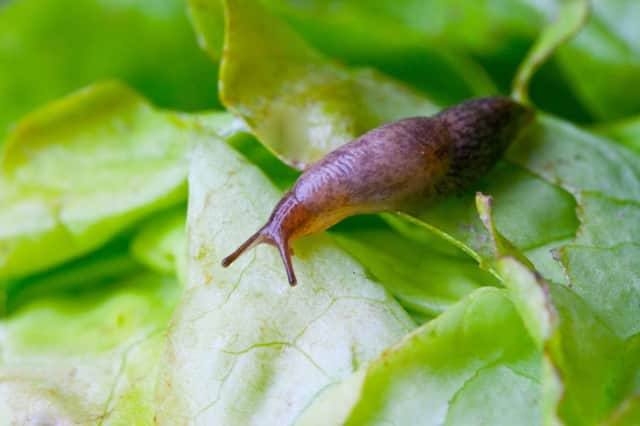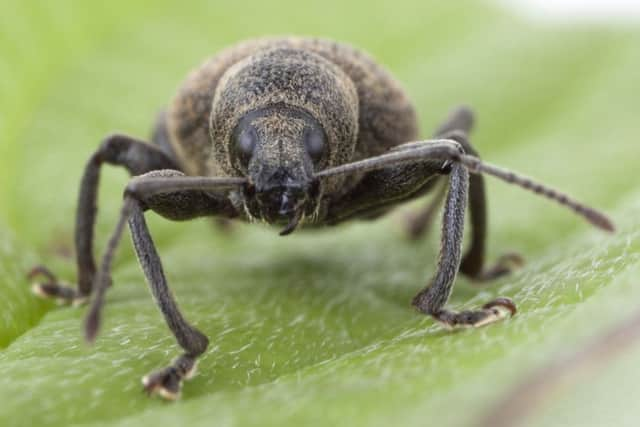Biological warfare should be best approach against pests


Many of us incorporate a variety of plants in our garden to attract beneficial predators such as ladybirds which will gobble up aphid eggs, or hedgehogs, song thrushes and frogs to feast on slugs and snails.
They all assist the balance of nature, but sometimes that balance needs a helping hand.
Advertisement
Hide AdAdvertisement
Hide AdMany organic gardeners have been using nematodes, or microscopic ‘eelworms’, for years. Nematodes are tiny micro-organisms which occur naturally in the soil where they hunt down and attack pests, with each different nematode having their own specific prey species.


Chemical giant BASF has the largest specialist nematode production facility in the EU and the only one in the UK, breeding trillions of up to five different species of beneficial nematode to create its Nemasys range, and now has products which will treat many common soil-dwelling pests including vine weevil, chafer grubs, slugs, leatherjackets and ant nests.
Nematodes generally come in sealed packs. The contents are mixed with water and applied via a watering can at particular times of year depending on the pest being targeted. Once applied, they will seek out their prey, whether it be slugs, vine weevil or other pests, entering the target’s body and releasing bacteria that will kill it. There is no need to keep children or pets away from treated areas.
The nematodes will then reproduce inside the corpse and create a new generation which will hunt for further prey. The company has also developed an all-round treatment aimed at fruit and veg growers which tackles the underground larval stage of common veg pests such as carrot fly, sciarid fly, cabbage root fly, sawflies, onion flies and codling moths.
Advertisement
Hide AdAdvertisement
Hide AdNemaslug, however, is the company’s bestseller, a product which works on the slugs that you don’t see, those which spend much of the time underground and do serious damage to underground shoots and potatoes. “They each work on the very simple format that the nematodes deliberately seek out their particular prey pests and kill them - simple as that,” says BASF’s UK sales manager Gavin Wood.


“Treatment can continue throughout the growing season and when the pests have all been wiped out, the level of nematodes in the soil will immediately drop back to the normal concentrations. When temperatures drop at the end of the season, the nematodes will naturally reduce in quantities until the soil warms up again.”
Guy Barter, RHS chief horticultural adviser, agrees that nematodes are probably the most eco-friendly solution to pest control.
“They are an excellent idea because they have no effect on non-targeted organisms, are safe for the user and are organic. The only downside is that they are rather expensive,” he says.
Advertisement
Hide AdAdvertisement
Hide AdHowever, Paul Hetherington, director of fundraising and communications at the charity BugLife, points to researchthat has shown incidence of certain nematodes crossing species, infecting bees as well, so would recommend using them only as a last resort.
FOR BEST RESULTS
l When applying, use a soil thermometer as nematodes require certain soil temperatures to be most effective, depending on which pest you are targeting.
l Apply the nematode solution to soil which is already moist. It’s best to water them in in the evening as soil rarely dries out overnight.
l Target leatherjackets and chafer grubs in April and October, to coincide with the weaker parts of their life cycles.
Advertisement
Hide AdAdvertisement
Hide Adl Keep sealed packs in the fridge so the nematodes remain inactive, ensuring their good health until you need them. Use the entire packet at one time and don’t store part-used packs.
l When applying nematodes to grass or flowerbeds, water well afterwards so that the nematodes are washed into the soil.
l See the advice on when it is best to apply each product to target the pest you want to get rid of. Remember that there can be an eight-week difference in the seasons between the north and south of the UK.